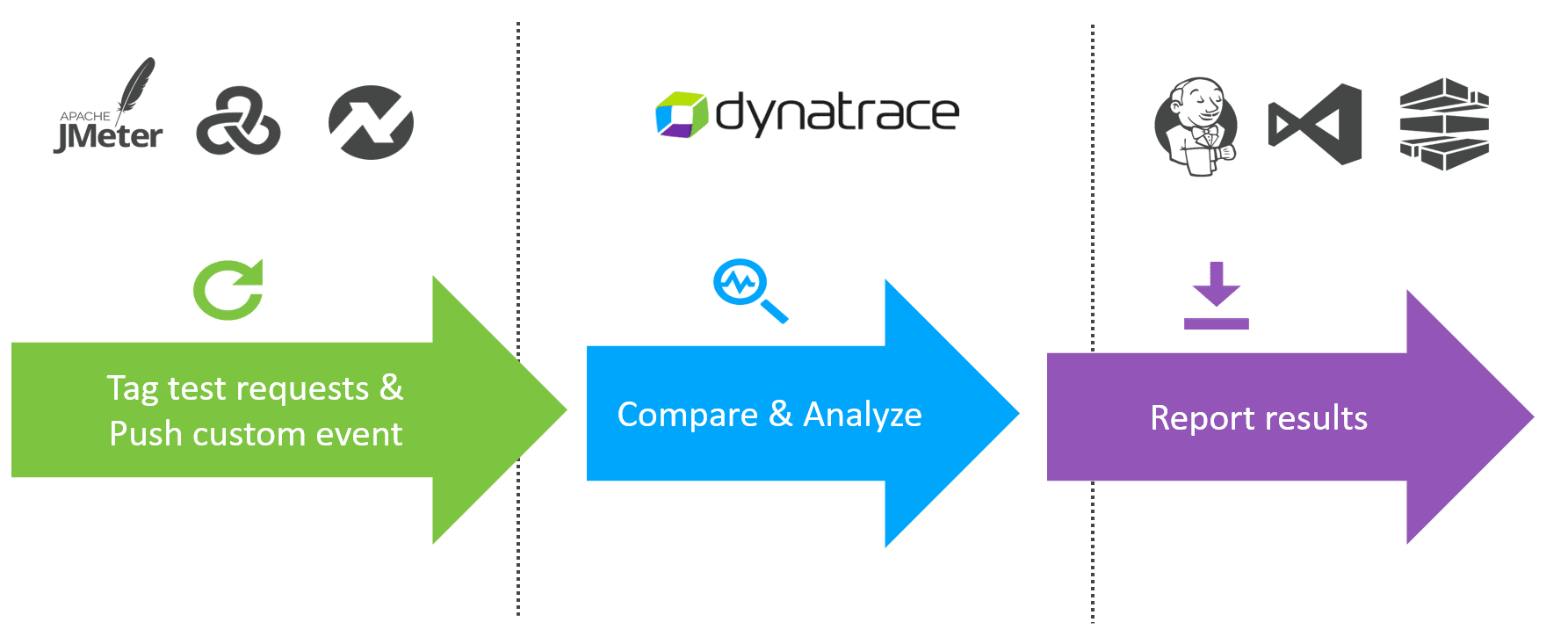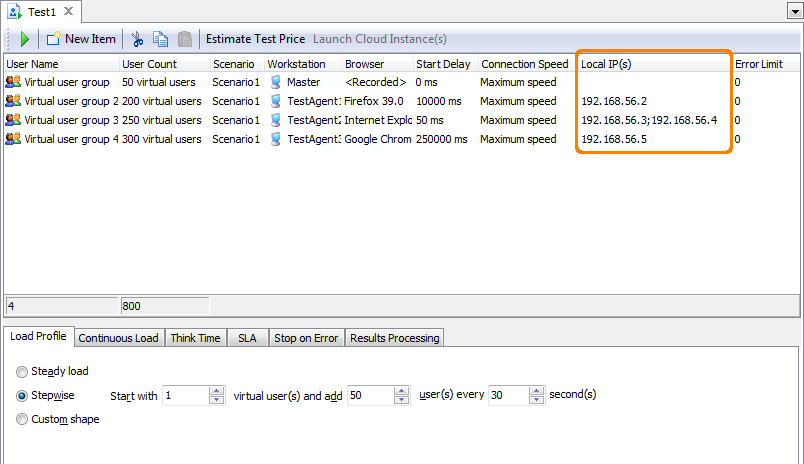Benefits Of Using WAN Stress Testing Tools. Let’s have a look at the benefits of using WAN stress testing tools. First and foremost, they take care of generating data to be transferred. You don’t have to find or create a test file. Some tools will generate random data, other will send a known sequence of bits. Run test All tests run in real-time from 200+ available locations around the world. You can use this tool to compare DNS providers and their performance in different regions. As well as debug your own self hosted DNS servers and test routing logic. Website: Price: From $0. Compared to what we’ve shown so far, Loader is a much simpler and more basic tool. Its free plan supports load testing with up to 10,000 virtual users which is enough for most moderate traffic websites. CyberVM is an online collection of tools made to help webmasters, IT and cyber experts around the world to analyze their own servers,websites firewall and internet configuration, stress tests them using the smartest techniques and receives a live report online, Therefore the usage of CyberVM is one hundred percent legal and should not be abused.
Tool for performing lots of DNS queries quickly.
Dns Server Stress Test Tool Boxes
Download dns-grind v1.0 here.
SHA1sum: db2beb7ca6caf4343f81936d78617f02b87da024
MD5sum: f145a5acf5cc53507d9be147adbe384e
User documentation is also available in PDF format.

Contents
- Overview
- Installation
- Usage
- Some Examples
- Bruteforcing Hostnames (A-record Lookups)
- Finding Registered Domains (NS-record Lookups)
- Finding Interesting Hosts In An IP Range (PTR-record Lookups)
- License
dns-grind is a tool for performs lots of DNS queries quickly. In particular:

- Bruteforce guessing of hostnames within a domain, e.g. if foobar.com doesn’t allow zone transfers, you can dns-grind to start guessing hostnames: www.foobar.com, test.foobar.com, ftp.foobar.com, etc.
- Quickly search a list of potential domain names for those that have name servers, e.g. If you’re testing for Foobar Enterprises Ltd, might want to search a list of domain like foobar.ac, foobar.ad, etc.
- Look for interesting hosts in a list of IP addresses by searching for PTR records – the manual equivalent of ‘dig -x 10.0.0.1′, ‘dig -x 10.0.0.2′, etc.
You can instruct dns-grind to only query a specific nameserver you’re testing, or to act like a normal DNS client and use the DNS configuration from your OS.
You can pass it a simple list of records to look up or you can give prefixes (e.g. www, test, ftp, …) and suffixes (foobar.com, foo-bar.com). The examples below should make this a bit clearer.
dns-grind is just a stand alone PERL script, so installation is as simple as copying it to your path. It has only been tested under Linux so far.
It depends on the following PERL modules which you may need to install first:
- Net::DNS
- Socket
- IO::Handle
- IO::Select
- Getopt::Std
If you have PERL installed, you should be able to install the modules from CPAN:
dns-grind should first be passed either a file of records to look up or a combination of prefixes and suffixes. The last parameter should be passed is the DNS query type. Only a few are supported currently.
Note the -m option above. Generally speaking you want at least 25 query processes running because DNS lookup can be slow if done sequentially by a low number of processes. Be aware that this tool can stress your local recursive DNS server. I’ve known the DNS service on ADSL routers to fall over if -m is set too high.
If you want to stress a different DNS server instead, use the -n option.
Bruteforcing Hostnames (A-record Lookups)

In the example below, we use a file of hostname prefixes (with ‘-P’ for prefix option) and a domain, pentestmonkey.net (with the ‘-s’ for suffix option). A single A-record is found.
NB: Wildcard A-records may ruin your search, but you could always ‘grep -v wildcard-ip’ as a workaround.
A variant of this scan would be to look for subdomains by replacing hostname-prefixes.txt with subdomain-prefixes.txt (us, uk, hq, intranet, etc.) and searching for NS-records instead of A-records.
Finding Registered Domains (NS-record Lookups)

Web Stress Test Tool
The premise for this search is that only registered domains have corresponding NS records. The real-world example below shows that this method kinda works, but needs a little refinement.
We supply a prefix of ‘pentestmonkey’ with the ‘-p’ option, and a file of potential suffixes 1 with the -S option. Note the captial letter in -S or -P to signify a file option, and lowercase -p or -s for a single prefix or suffix2.
After a bit of further investigation we find that there’s a wildcard NS record for any domain ending in .mp, .sh, .ac, .io, or .tm. These results are effectively false-positives. As is .vg for which a CNAME is returned when we look up the NS record.
The only registered domains with a prefix of ‘pentestmonkey’ are therefore .com, .net and .org.
Finding Interesting Hosts In An IP Range (PTR-record Lookups)
Simply supply a list of IP addresses with the -f option. Below we use the genip3tool to generate a list of IPs first.
This tool may be used for legal purposes only. Users take full responsibility for any actions performed using this tool. The author accepts no liability for damage caused by this tool. If these terms are not acceptable to you, then do not use this tool.
In all other respects the GPL version 2 applies:
Tags: discover, dns, dnsgrind, domain, enumerate, fast, host, hostname, ip, nameserver, ns, pentest, ptr, query, scan, tool
Posted in Misc
Public Dns Server Tool
DNS and traffic management solution provider NS1 has announced the open source release of its Flamethrower tool for testing, benchmarking, and stress testing DNS servers and networks.

Flamethrower supports IPv4, IPv6, UDP, TCP, and DNS over TLS. It also offers experimental support for DNS over QUIC.
It generates the queries for tests using a modular system, which enables it to provide realistic test scenarios that organizations can plug into their automation pipelines. It also can simulate concurrent clients and generate metrics, such as send and receive counts, timeouts, errors, and data on minimum, maximum, and average latency.
Dns Server Stress Test Tool Kit
According to NS1, the tool can adjust how many queries it does per second over time, which makes it ideal for general traffic signals for calibrating time series metrics collection. Flamethrower can also replicate the surges in traffic that an organization would experience during a DDoS attack or be used for chaos engineering.
Dns Test Tool Download
“Like many popular open source tools, Flamethrower was created to address a need we had internally at NS1,” said Shannon Weyrick, vice president of architecture at NS1. “Our engineering team required a versatile tool for DNS server development and load testing, but existing solutions didn’t have the features we needed, which limited our ability to perform realistic tests. We built Flamethrower to enable complex testing for DNS performance and functionality so that traffic teams can gain a better understanding of the impact of potential changes to applications and infrastructure in actual production situations.”